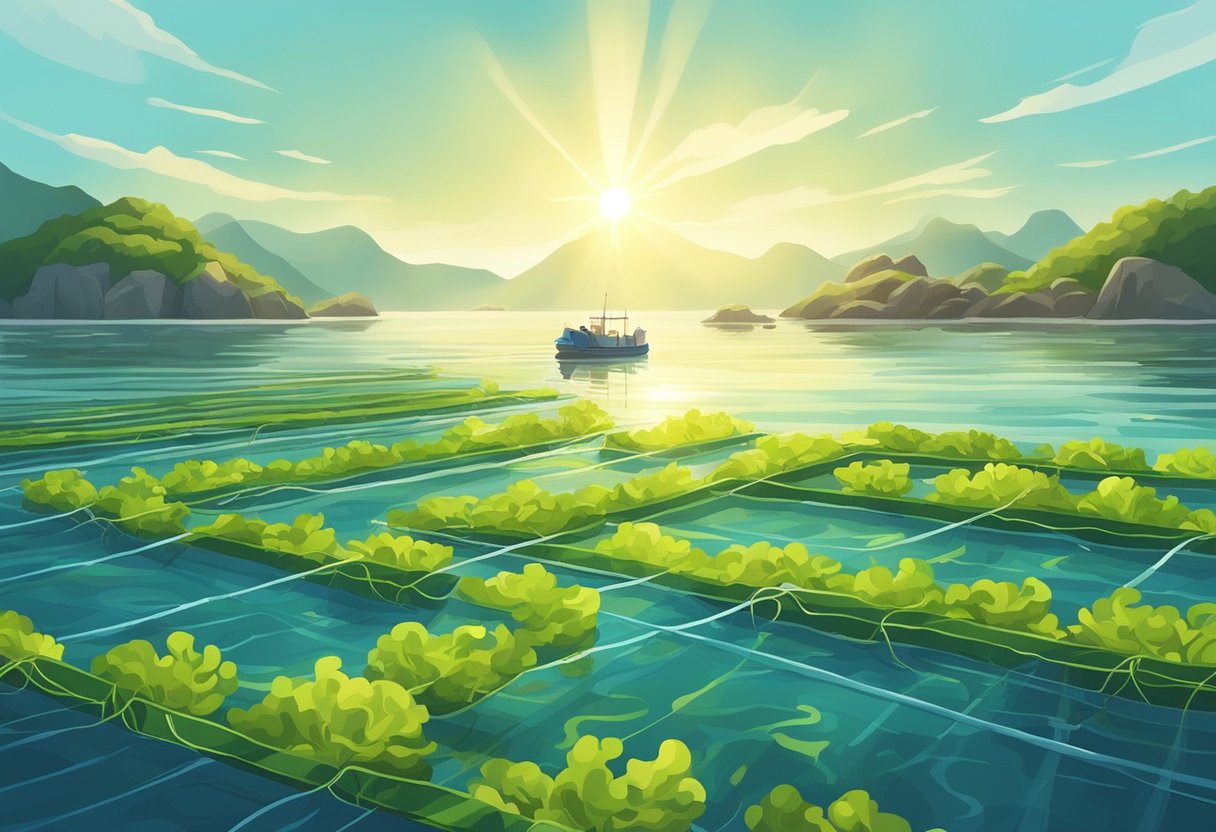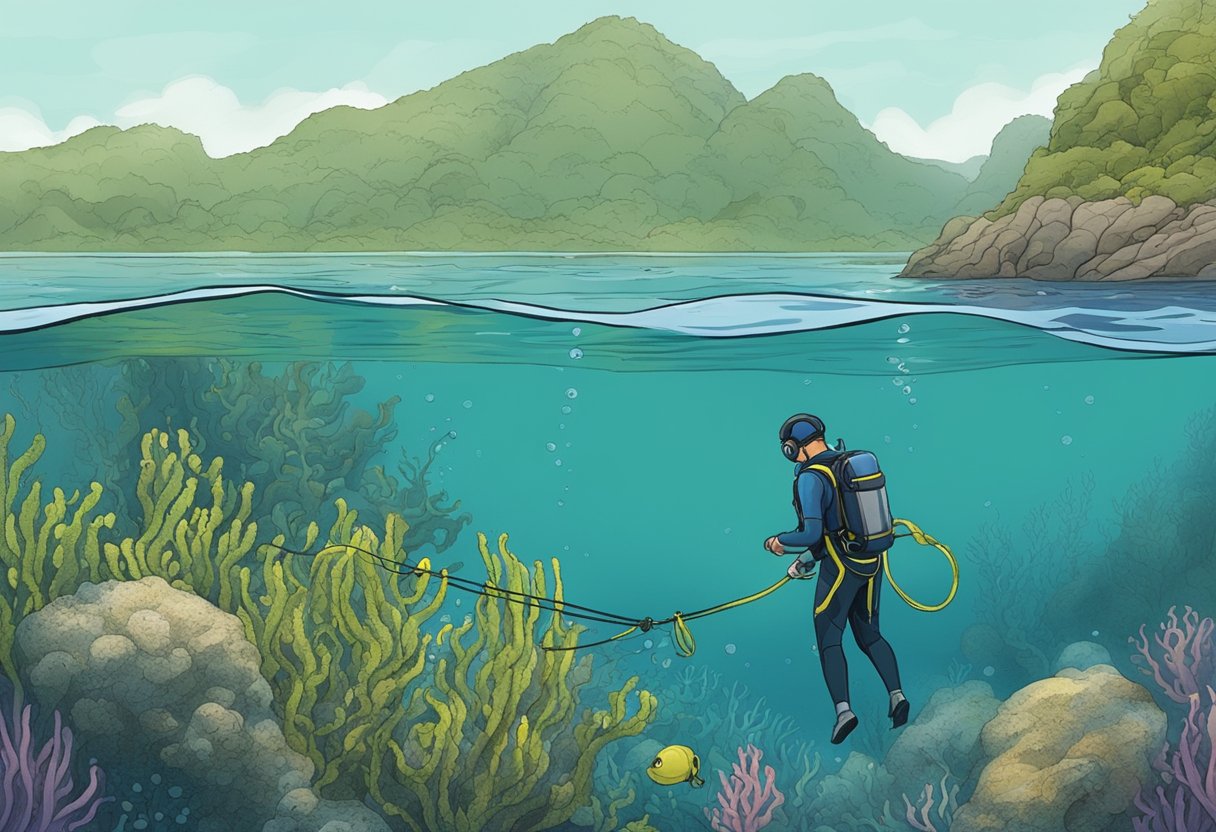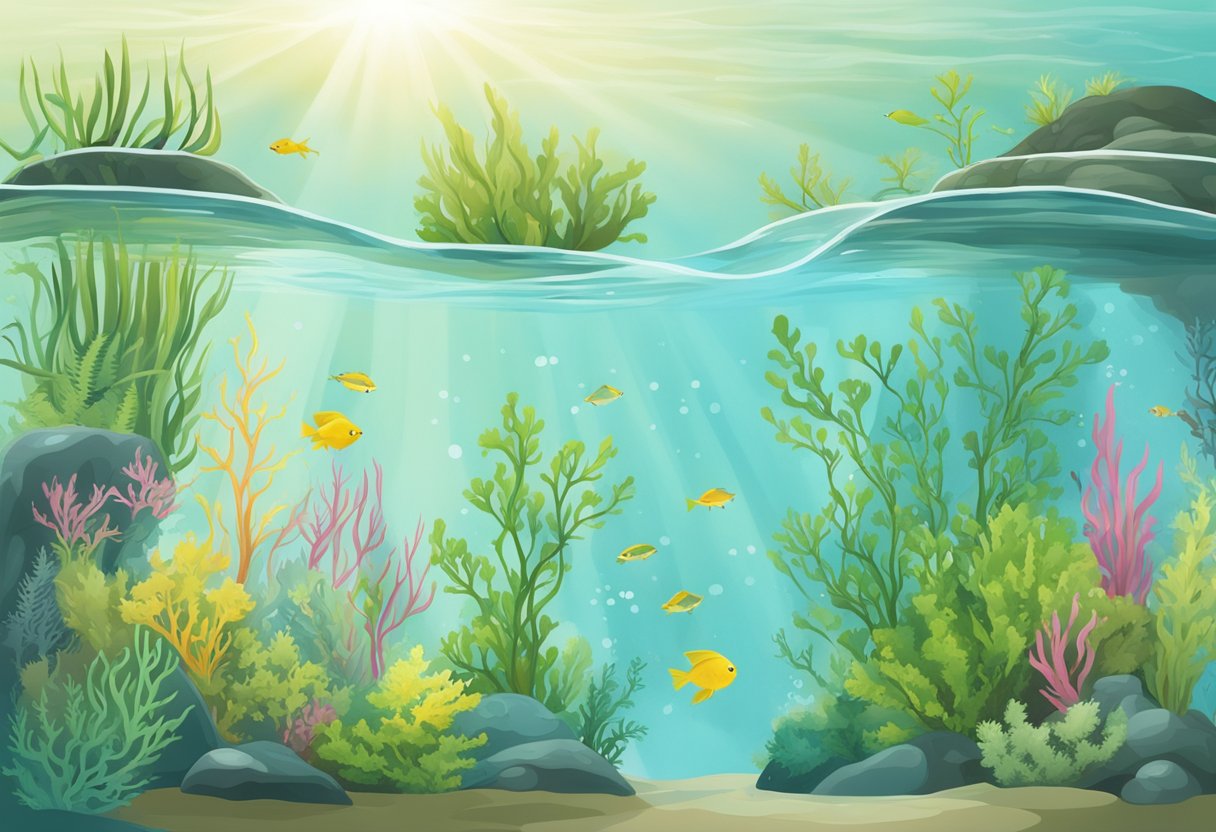Growing seaweed has significant environmental, economic, and health benefits. As an aquatic plant, seaweed helps to remove carbon dioxide from the atmosphere while providing habitat for marine life. With a growing demand for seaweed in the food industry, pharmaceuticals, and even in biofuel production, learning to cultivate seaweed can be a noteworthy venture. It's crucial to commence with an understanding of the various species of seaweed and their respective growing conditions to ensure a successful seaweed crop.
The essentials for cultivating seaweed involve selecting the right type of seaweed to grow, understanding the specific water conditions it requires, and knowing the nutrients it will need. The process of setting up a grow area differs significantly from terrestrial farming and often involves the installation of ropes or nets in marine or freshwater environments where the seaweed can attach and grow. This infrastructure must be checked and maintained regularly to ensure the health and quality of the growing seaweed.

When caring for seaweed, regular monitoring is necessary to manage pests, diseases, and ensure proper growth. Harvesting seaweed at the correct time is essential for maximising yield and quality. Also, it is important to engage with local communities and regulatory bodies to ensure sustainable and legal farming practices. There is a wealth of information available for potential growers, and addressing frequently asked questions can provide additional insights and tips for beginners and experienced farmers alike.
Key Takeaways
- Proper species selection and understanding of growing conditions are crucial for seaweed cultivation.
- Setting up the grow area requires specific infrastructure like nets or ropes in suitable aquatic environments.
- Regular maintenance and timely harvesting are key to healthy seaweed and high-quality yields.
Essentials of Seaweed Cultivation

Cultivating seaweed effectively necessitates an understanding of its biology, choosing appropriate species, and providing optimal growth conditions. This section explores these critical components of seaweed cultivation.
Understanding Seaweed Biology
Seaweeds are marine algae that require specific environmental conditions to thrive. They engage in photosynthesis and thus need plenty of sunlight, in addition to clean water with the suitable concentration of salts and nutrients. While they do not have a complex root system like terrestrial plants, they anchor themselves to rocks or other structures with their holdfasts.
Selecting the Right Species
When selecting a species for cultivation, one should consider the local climate, water temperature, and salinity. Some popular home-cultivation species include Nori (Pyropia spp.) and Kelp (Laminaria spp.). These species are hearty, grow rapidly, and have a variety of uses in food and other products.
-
Species for Cold Waters:
- Laminaria spp.
- Saccharina spp.
-
Species for Warm Waters:
- Gracilaria spp.
- Eucheuma spp.
Seaweed Growth Requirements
Seaweed generally requires:
- Light: Sunlight or artificial light for photosynthesis.
- Water Quality: Clean, circulating water with adequate nutrients.
- Temperature: Varies per species; some prefer cold waters, while others thrive in warmer conditions.
- Substrate: A suitable surface to attach, such as rocks, ropes, or nets.
For Home Cultivation:
- Tank Size: At least 20 gallons to provide enough space for growth.
- Water Circulation: Pumps or bubblers to simulate natural water movement.
- Lighting: 8–10 hours of light daily, adjusted depending on species needs.
- Harvesting: Gentle pulling or cutting of mature fronds, ensuring regrowth.
Setting Up Your Seaweed Grow Area

When growing seaweed at home, one must meticulously select the appropriate location, prepare the grow medium suitably, and maintain specific water conditions to ensure a successful cultivation process.
Choosing the Location
The location for seaweed growth should provide ample sunlight and stable water conditions. Indoors, a well-lit aquarium can serve as an excellent environment, while outdoors, a sheltered coastline or a calm body of water can be ideal. Factors such as accessibility for maintenance and protection from contaminants must also be considered.
- Light Exposure: Preferably indirect, bright light.
- Accessibility: Easy to access for monitoring and maintenance.
- Protection: Sheltered from pollutants and rough water.
Preparing the Grow Medium
Seaweed requires a grow medium that mimics their natural habitat to thrive. Commercially available seeding ropes or nets are commonly used for attaching seaweed spores. They should be weighted appropriately to remain submerged and positioned correctly to receive adequate sunlight.
- Seeding Ropes/Nets: Utilized for spore attachment.
- Weighting: Ensure that the medium remains submerged.
- Positioning: Place in an area with optimal light exposure.
Water Quality and Conditions
Maintaining water quality is crucial for the health and growth of seaweed. Parameters such as temperature, salinity, pH, and nutrients need to be monitored regularly. Seawater mimicking solutions can be used for indoor setups to replicate ocean conditions.
- Temperature: Generally between 13°C - 24°C (55°F - 75°F).
- Salinity: Approximately 30 to 35 parts per thousand.
- pH: Typically between 8.0 and 8.2.
- Nutrients: Adequate levels of nitrogen, phosphorus, and potassium.
- Monitoring: Frequent checks to detect and correct deviations.
Caring for Your Seaweed

Growing seaweed at home requires attention to water quality, light, and nutrients. Consistent care ensures healthy growth and successful harvesting.
Maintaining Optimal Conditions
Water Quality: Seaweed thrives in specific water parameters. Salinity should be maintained at 30-35 parts per thousand (ppt), and the pH level should ideally be between 8.0 and 8.2. Temperature is crucial; cooler waters, typically between 50-65°F (10-18°C), are ideal for seaweed cultivation. Regular testing of water conditions is necessary to ensure they remain within these ranges.
Light: Adequate lighting is essential for photosynthesis. Seaweed requires 10-14 hours of light each day. If natural light is insufficient, especially when growing seaweed indoors, artificial light sources like LED or fluorescent bulbs can be used to provide the necessary light spectrum.
Nutrients: Seaweeds absorb nutrients, such as nitrogen and phosphorus, directly from the water. To maintain growth, regular supplementation of these nutrients might be needed. A balanced fertilizer designed for marine plants can be added to the water, following the manufacturer's guidelines to avoid over-fertilization.
Monitoring and Managing Growth
Inspection: Frequent, regular checks of the seaweed can help identify issues such as disease or pest infestations early. Indicators of poor health include discoloration, slow growth, or frayed edges.
Density Management: As seaweed grows, it may become densely packed, which can reduce water flow and light penetration. It's important to thin out seaweed to prevent overcrowding, allowing each plant access to sufficient nutrients and light.
Pest Control: Common pests include sea slugs and amphipods. These can be manually removed or controlled through natural predators, depending on the scale of the cultivation.
Harvesting Techniques
Timing: Harvest seaweed once it has reached its full size, but before it shows signs of aging, such as excessive yellowing or thinning. For many species, this is typically within 45-90 days of planting.
Method: Using scissors or a sharp blade, cut the seaweed above its growing base or holdfast, leaving enough for regrowth. Gently rinse the harvested seaweed with seawater to remove any sediment or organisms.
Post-Harvest Handling: After harvesting, seaweed can be dried, refrigerated, or processed immediately, depending on its intended use. Proper handling is essential to maintain quality and prevent spoilage.
Frequently Asked Questions

The FAQs provide essential insights into seaweed cultivation, addressing the basics of home growing, ideal environments, startup procedures, suitable species for beginners, common challenges, and the benefits of seaweed farming.
What are the basic requirements for cultivating seaweed at home?
Seaweed requires specific conditions such as clean seawater, an appropriate temperature range, light, and nutrients for growth. Home cultivators need to mimic these conditions using tanks or aquariums that allow control over the environment.
What is the best environment to farm seaweed successfully?
The optimal environment for farming seaweed is one that offers stable water conditions, correct salinity, ample sunlight, and a flow of nutrients. Coastal areas with pristine water quality are ideal, but on-land systems can be engineered to simulate these conditions.
How does one start a seaweed farming venture on land?
To start a land-based seaweed farm, one should first secure a reliable water source and design a system for water circulation and filtration. This ensures the controlled delivery of nutrients and the maintenance of appropriate salinity and temperature levels.
Are there any specific species of seaweed that are more suited to cultivation for beginners?
Species like Nori (Porphyra) and Kelp (Laminaria) are often recommended for beginners due to their robust nature and well-understood growth requirements. These varieties are also popular for their culinary and commercial demand.
What are the common challenges faced when farming seaweed and how to overcome them?
Common challenges in seaweed farming include water pollution, temperature control, invasive species, and diseases. Overcoming these challenges involves systematic monitoring, maintaining water quality, and implementing biosecurity measures.
What are the potential economic and environmental benefits of seaweed farming?
Economically, seaweed farming can be lucrative due to growing demand in food, cosmetics, and biofuel industries. Environmentally, it helps in carbon sequestration, improving marine biodiversity, and can even aid in water purification by absorbing excess nutrients.




